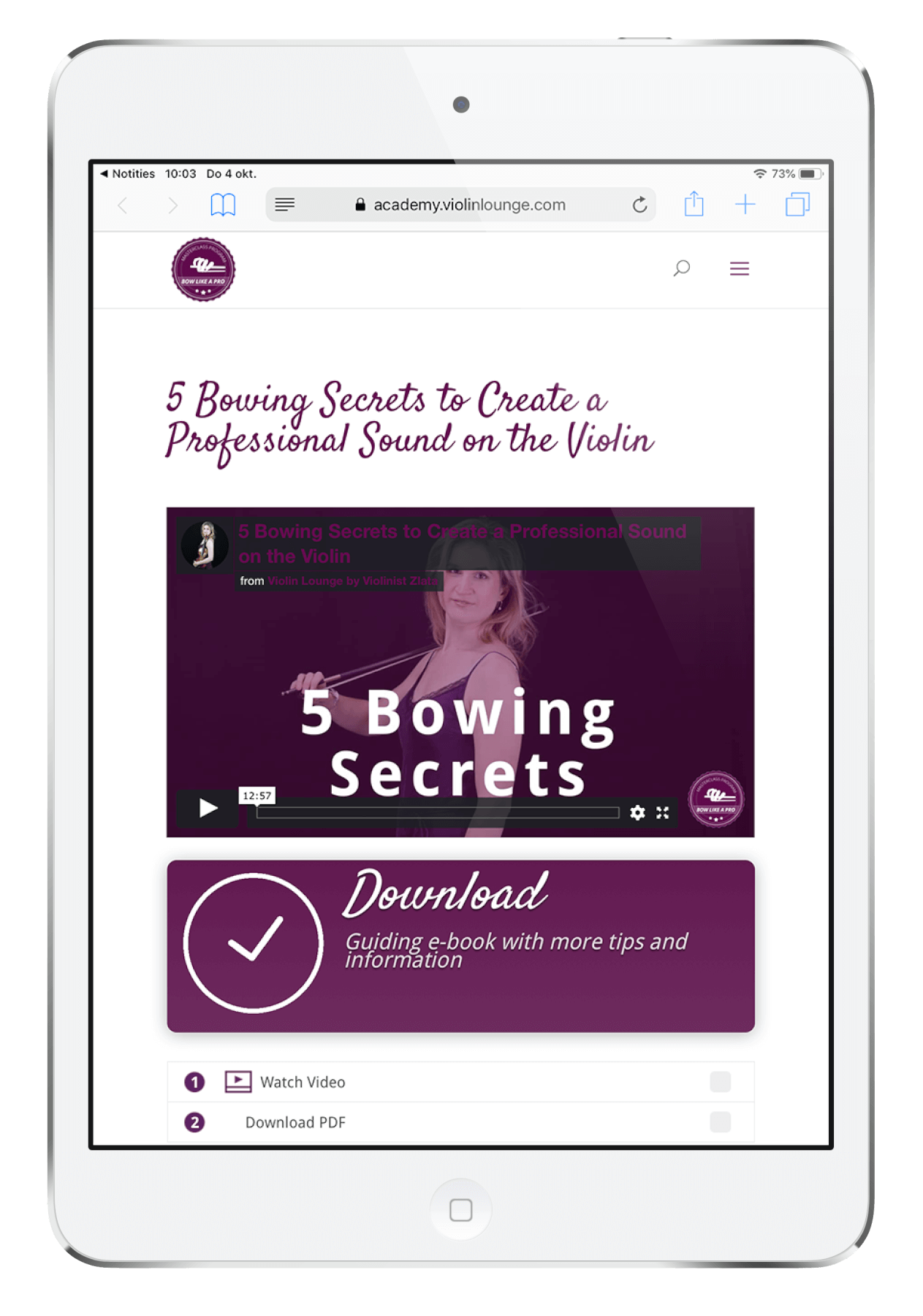You don’t have to Bow Straight, says Itzhak Perlman
Every violin teacher hammers on bowing straight, but you see concert violinists doing otherwise
I decided to dive in this topic and end the confusion…
Recently I followed the wonderful course by Itzhak Perlman at Masterclass.com. In it the maestro explains a lot about his technique, practicing and interpretation. Also you see him working with students. Very inspiring!
When talking about the basics of bowing, he explains that you don’t have to bow straight
Instead he recommends bowing in an eight (seen from above).
This means at the downbow your frog is a bit in the direction of the scroll and on the upbow you move the tip a bit in the direction of the scroll. I already applied the last to smoothen bow changes at the tip. Also it can be useful for those with shorter arms to be able to use the whole bow.
You can assume that what violin soloists do is not ‘by accident’
When I was in conservatory, one of my teachers explain that some soloists have a ‘bad basic technique’, meaning not by the book. He mentioned Milstein as an example. But…
How can it be ‘bad technique’ if it works better than everyone else?
I went out to research the straight bowing thing
First I tried it out on my violin in front of the mirror
Bowing absolutely straight gave the best response and resonance in my instrument. Slightly off didn’t mean a big difference, but it wasn’t as good as absolutely striaght. Quite a bit off meant a vague bad tone. Hmm, the ‘book’ seemed to be right.
I asked my bow maker about the ‘technical’ side of things
He agreed that in theory bowing straight should produce the best sound. However, in bows that are not as stiff as my Arcus bow, you might need some sideways pressure to compensate for the instability of the bow. Have a better stability can compensate for the loss of tone when bowing a bit crooked.
Ah, there it is, with my Arcus S9 bow I don’t need bowing a bit ‘off’ as a work around and I can ‘simply’ bow straight to get the best sound as the bow is stable.
3 Reasons why you learn to bow straight
1 Learning this skill gains control over your bow and awerness where it goes
From there you can make consious decision about what your doing in the broader sense of tone production.
2 Better tone
See above, all other factors ignored (just for this paragraph), bowing absolutely striaght simply gives you the best sound. However…
3 Consistent contact point
Besides learning to bow straight, in the beginning you also learn to stay right between the bridge and the fingerboard. This produces a ‘standard’ tone on the violin. Depending on the dynamics and position you play in, you can change this to near the bridge or near the fingerboard. If this concept is new to you, read my article about coloring your sound by changing contact points.
Improve your violin bowing technique
Enjoy my FREE mini Masterclass 5 Bowing Secrets to Create a Professional Sound on the Violin

Hi! I'm Zlata
Classical violinist helping you overcome technical struggles and play with feeling by improving your bow technique.
As soon you’ve learned to bow straight, forget about it!
There’s more to sound quality, tone production and musical expression in general than bowing straight.
Just what scales are to music, bowing straight is to bowing
You use it to have a tool in your toolbox. With that tool you can create different things. Also you can use it whenever you see fit.
To smoothen your bow change at the tip, you can move your tip a bit towards to scroll.
You have to move your frog or tip to the scroll to be able to change contact point in one bow stroke.
However, if you don’t master the skill, you can’t use it consiously
When you are in no control over your bow or contact point and you don’t want to folllow your teacher’s advice, because ‘Perlman said…’ you’re making a mistake!
Conclusion: Yes, you need to be ABLE of bowing straight. Yes, you can do something different when music asks.
You might find my article about learning to bow straight without looking interesting.
Also read my article about Ithzak Perlman’s practice schedule and watch my video about the 3 violin hacks I learned from Perlman’s masterclass course.
Are you interested in the online course by Itzhak Perlman at Masterclass.com?
I bought and followed the course myself and I’m happy to refer you. When you join the course through this link, you pay exactly the same as that you find the masterclass yourself. However, using the above link Violin Lounge gets a small commission. This income is used to finance this website, the free articles and violin video lessons we put out there. Isn’t that a win-win-win deal for all of us?


Thanks Zlata. I just bought the Perlman masterclass through your link, a way of saying thanks for all the wonderful stuff you share.
Leila 🙂
Thanks so much for your support, Leila, enjoy Perlman’s course!